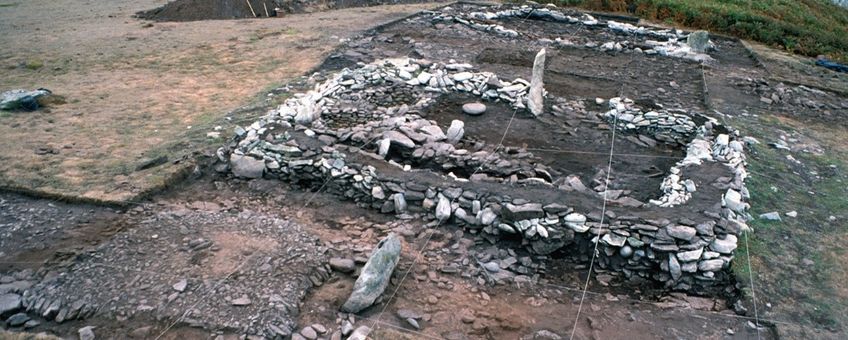
Prehistoric land use increased plant diversity
Wageningen UniversityIn the last decades the preservation of biodiversity has been one of the top priorities on the global environmental agenda. However, the relations between human land use and plant diversity in the past have hardly been studied. This is remarkable, because insights into the nature of this connection may provide valuable input for future policy. This is the reason why the universities of Rennes 1 and 2 started a research project on this topic, carried out by an interdisciplinary team comprising an archaeologist, a palynologist and an ecologist. Iron Age and Early Roman Brittany were chosen as pilot period and area for the project. This region provides both a wealth of palaeobotanical data and detailed archaeological knowledge on past land use.

The development of plant diversity through time can be reconstructed by means of fossil pollen analysis (palynology). For the study 30 pollen cores from different parts of the Breton peninsula were analysed. Special attention was given to ‘taxonomic richness’, a simple measure to indicate how many plant species are present at a specific point in time. Human land use patterns were reconstructed using various archaeological sources such as excavation reports. On average, the number of taxa recorded in the pollen samples increased from just over 28 to over 32. In the period under study, the habitation density of Brittany increased rapidly. When the Romans conquered the Breton peninsula in the middle of the first century BC, the landscape was relatively open, heavily influenced by man, and densely settled.

The explanation for the rise in plant diversity can be found in general changes in vegetation caused by an intensification of human land use. This trend had already started thousands of years earlier. After about 8000 BC, most parts of Europe were densely forested. Plant diversity was low in these comparatively homogeneous landscapes. After the introduction of agriculture forests gradually made place for a more open landscape consisting of settlements, arable fields, pasture, heathlands, forest relics and bogs. The emergence of this diverse ‘landscape mosaic’ led to an increasing plant diversity. As demonstrated by earlier research, mainly in Scandinavia, diversity values kept rising until large-scale human interventions (e.g. the introduction of monocultures, urbanisation) led to the emergence of very homogeneous landscapes. In most parts of Europe this stage was probably only reached in the 18th and 19th century. The French study is the first to make a detailed assessment of the exact links between human activity and plant diversity in the more distant past.
Text, map and graph: Roy van Beek, Wageningen University
Photo: Marie-Yvane Daire, Université de Rennes 1 (lead photo: remains of an Iron Age settlement at Mez-Notariou on the isle of Ouessant, off the west coast of Brittany)
